This article contains sensitive content about traumatic experiences that may be distressing to some readers.
More than 150,000 First Nations, Inuit and Métis children across Canada were taken from their families and sent to residential schools created by the federal government and Christian churches between the 1830s and 1990s.
Stripped of their languages, cultures and spiritual traditions, they endured disease as well as physical, sexual and emotional abuse at the schools.
Thousands of Indigenous children never made it home, while the trauma endured by Survivors continues to be felt by successive generations.
Canada Post has unveiled four new stamps to encourage awareness and reflection on the tragic legacy of the residential school system, whose impacts are still felt by First Nations, Inuit and Métis people today.
The second issue in Canada Post’s annual Truth and Reconciliation stamp series, the stamps will be issued on September 28 to mark the National Day for Truth and Reconciliation on September 30.
As part of its partnership, Canada Post has entered a five-year sponsorship with the National Centre for Truth and Reconciliation (NCTR) to support their important work sharing the truth and fostering healing.
The stamps were developed in close collaboration with the Survivors Circle of the National Centre for Truth and Reconciliation as well as external reviewers Dr. Crystal Gail Fraser and Dr. Tricia Logan. They stressed the importance of truth as a precursor to genuine reconciliation. That includes coming to terms with the full history of the residential school system, and its enduring impact on Indigenous Peoples.
Featuring archival photographs of residential schools and school residences in different parts of Canada, the stamps evoke the fear, loneliness, pain and shame experienced by generations of Indigenous children within their walls.
The following institutions are represented:
Kamloops Residential School, Kamloops, B.C.
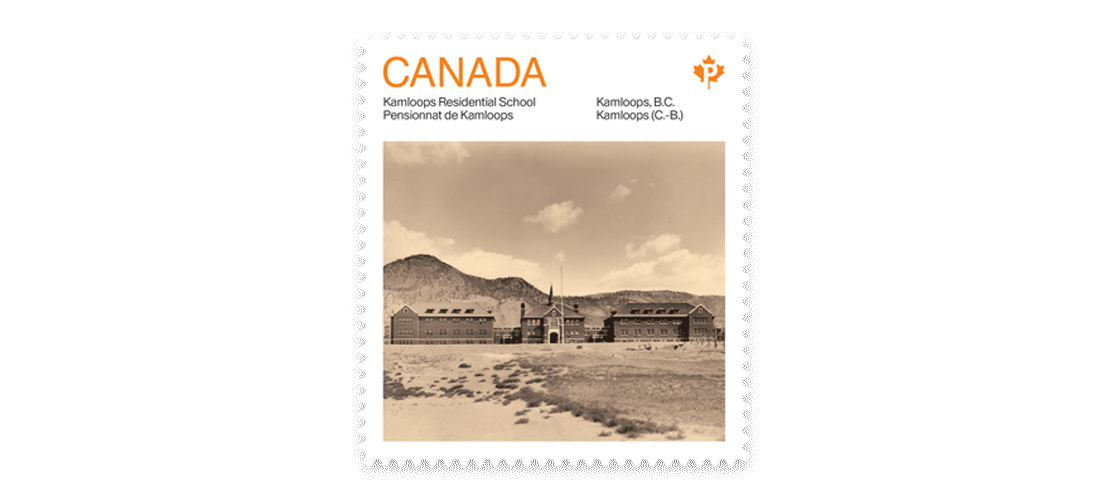
Opened: 1890
Closed: 1978
Denomination: Roman Catholic
Originally established as the Kamloops Industrial Residential School, the institution became the largest school in the residential school system. First Nations students suffered from food shortages and a lack of clothing while disease, unsanitary living conditions and abuse were rife.
The federal government did not fully respond to appeals for more funding and support before taking over administration of all residential schools in 1969. By that point, Kamloops Residential School did not offer any classes and operated as a residence for students attending local day schools until it was closed.
In 2021, the remains of 200 children were believed to have been found on the grounds of the Kamloops Residential School using ground-penetrating radar. The discovery sparked a shift in Canadians’ understanding of the history of the residential school system and changed the national conversation about its impact on generations of Indigenous Peoples.
Île-à-la-Crosse Residential School, Île-à-la-Crosse, Sask.
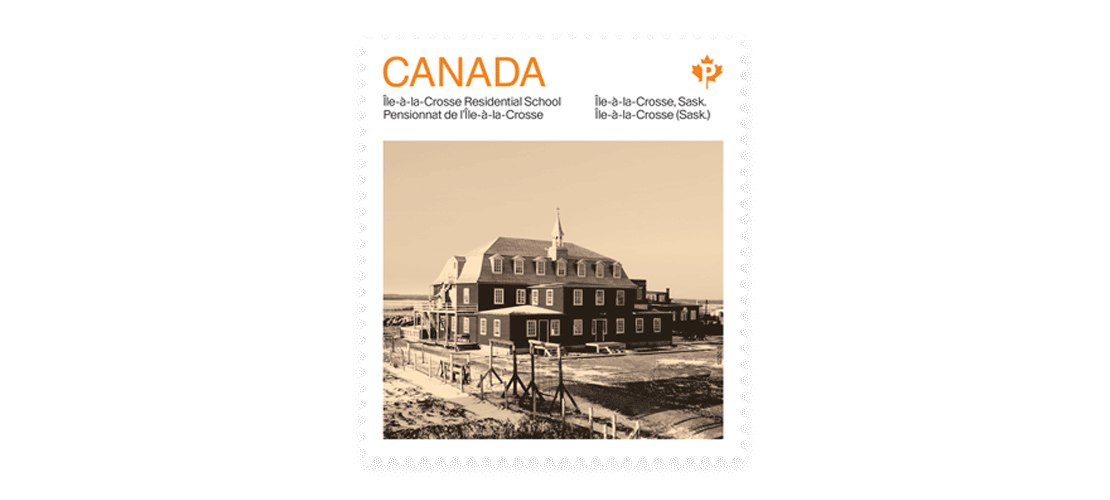
Opened: 1821
Closed: 1976
Denomination: Roman Catholic
Located in a historically Métis community, Île-à-la-Crosse Residential School was selected to represent the little-known and complicated history of Métis experiences at residential schools. The school had frequent funding shortages and students were forced to contend with the continual threat of fires as well as physical and sexual abuse.
When the federal government later agreed to compensate residential school Survivors and establish a Truth and Reconciliation Commission, Île-à-la-Crosse was not included. The government argued the school was left out because it predated the federal residential school system. The Truth and Reconciliation Commission nonetheless conducted a hearing in Île-à-la-Crosse in November 2012.
Métis continue to advocate for federal recognition of their experiences at Île-à-la-Crosse Residential School.
Sept-Îles Residential School, Sept-Îles, Que.
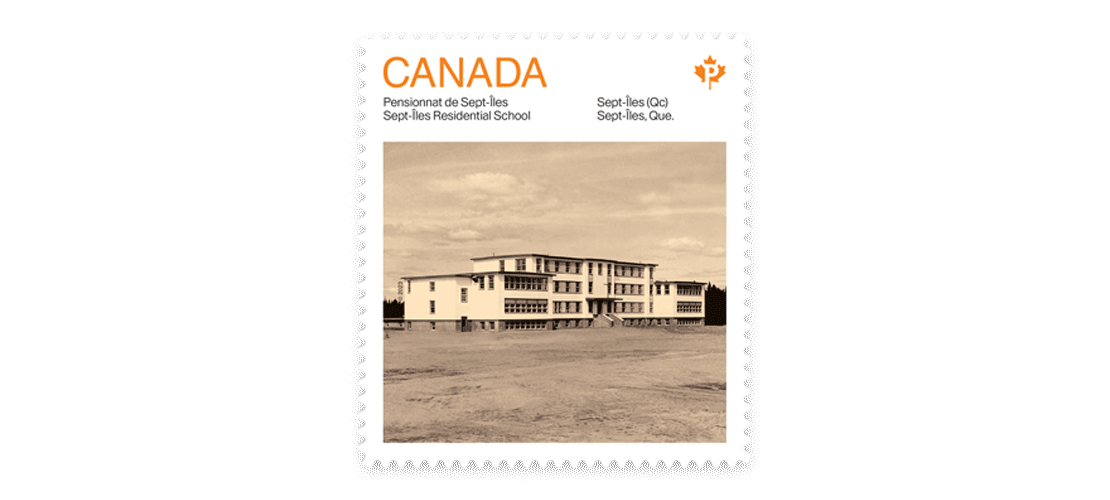
Opened: 1952
Closed: 1971
Denomination: Roman Catholic
Also known as Maliotenam, the Sept-Îles Residential School was the first such institution established in Quebec after the Second World War. Instruction at the school was in French and starting in 1961, it also served as a residence for students attending day school in Sept-Îles.
Many of the students were Innu taken from their families and communities. Forbidden from speaking their language and stripped of their culture, they were forced to learn French while enduring physical, sexual and emotional abuse.
Maliotenam has long been a gathering place for Innu of the region, and the former school has since become the site of the annual Innu Nikamu Festival, one of the largest Indigenous music and arts festival in North America.
Grollier Hall, Inuvik, N.W.T.
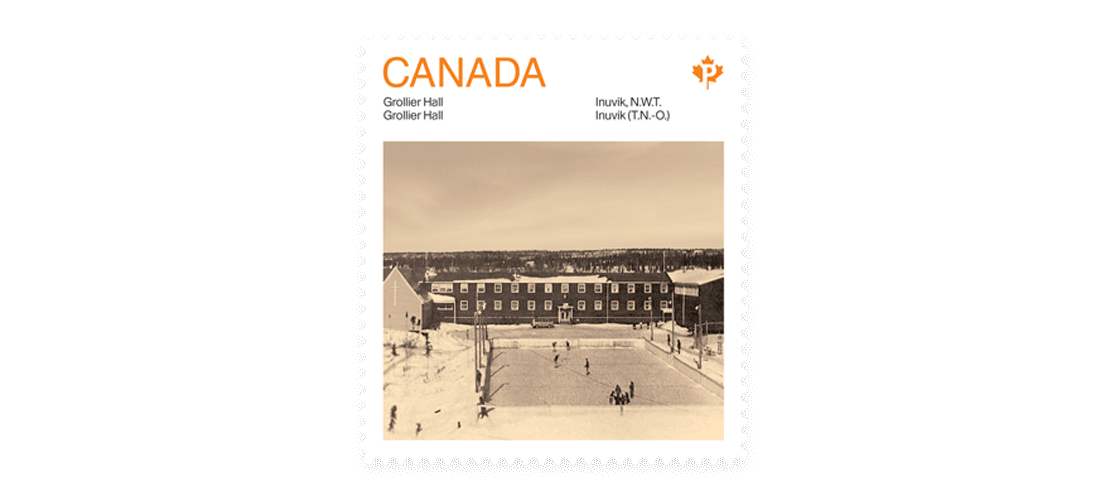
Opened: 1959
Closed: 1997
Denomination: Roman Catholic
Grollier Hall was opened in the newly established community of Inuvik as part of a federal plan to establish hostels in northern communities. Students lived in Grollier Hall and attended school at the nearby Sir Alexander Mackenzie Day School.
One of the last institutions to close, Grollier Hall was the site of many acts of physical, sexual and psychological abuse. In many cases, complaints were not properly investigated, and only later were staff members convicted of sexually abusing students at the school.
Grollier Hall was selected for the stamp issue to represent Inuit and Northern First Nations experiences in the residential school system. The inclusion of school residences also extends the scope of the series to include the experiences of Survivors who attended day schools.
Cancellation
The stamps are cancelled in Ottawa, where the federal government adopted policies that supported and facilitated the residential school system for generations. The cancel features the Survivors’ Flag, which honours Survivors and all those affected by the residential school system.
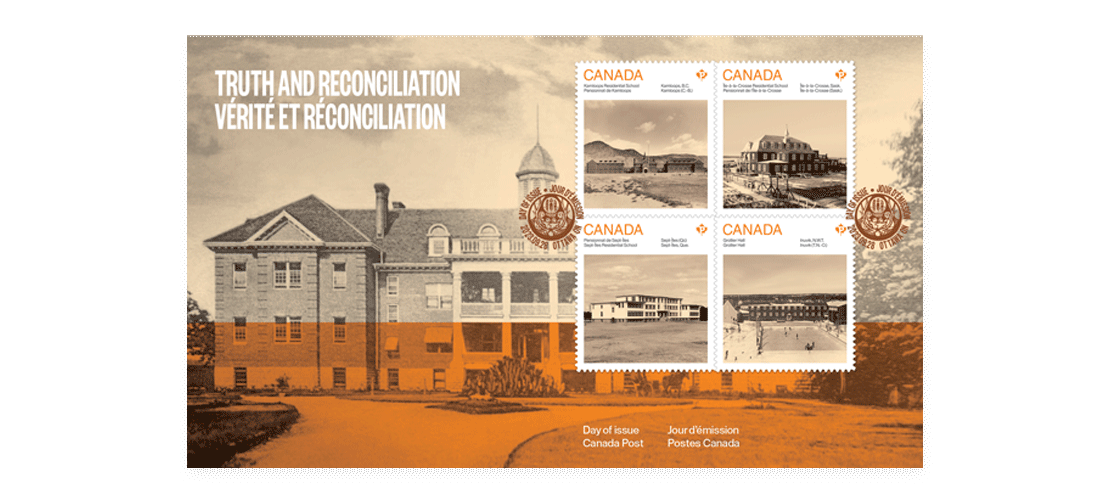
Official First Day Cover and booklet
The Official First Day Cover and stamp booklet feature archival images of four other residential schools and school residences chosen in consultation with the Survivors Circle. They are:
Mohawk Institute, Brantford, Ont.
Opened: 1828
Closed: 1970
Denomination: Anglican
The first school in Canada’s residential school system, the Mohawk Institute was to be considered a model for other industrial schools. It would remain in operation until 1970, making it the longest operating residential school in Canada’s history.
Children at the school often went hungry and did not have proper clothes. They were forced to endure long hours of menial labour, while disease was rampant and fires were a constant danger. Students who tried to run away faced corporal punishment.
The Association of Iroquois and Allied Indians established the Woodland Cultural Centre on the site of the Mohawk Institute after it closed. The centre plays an important role in preserving, promoting and strengthening Indigenous language, culture, art and history.
Ermineskin Residential School, Maskwacis, Alta.
Opened: 1895
Closed: 1975
Denomination: Roman Catholic
Ermineskin Residential School was selected for the stamp issue to represent Survivor experiences in the Prairies, where more than half of the institutions were located at the height of the residential school system in the 1920s.
Disease and overcrowding were constant problems at the school. Three children died of tuberculosis in 1903, while a government survey found 50 per cent of the students at the school were infected with the disease in the 1920s.
Pope Francis visited the site of the former institution in July 2022, before apologizing for the Catholic Church’s role in the residential school system.
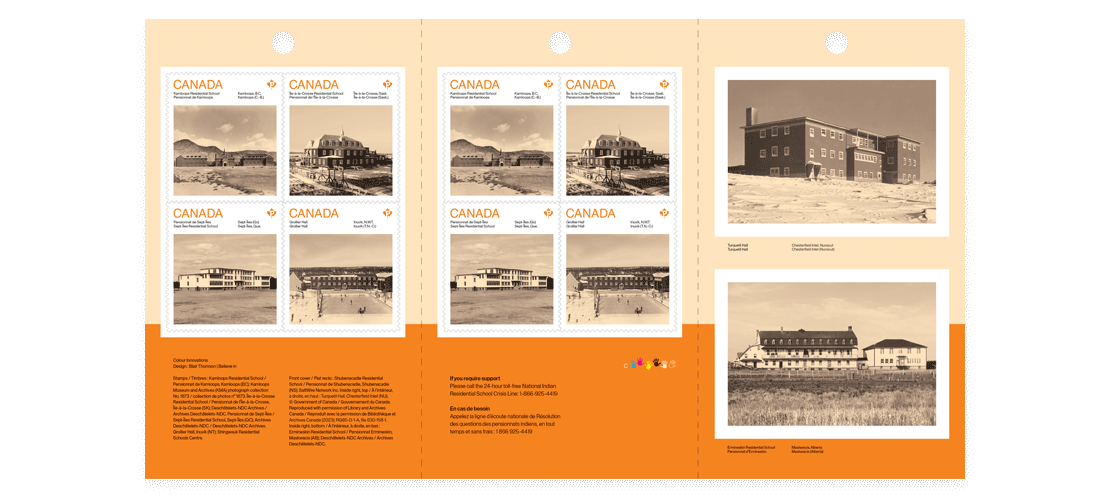
Turquetil Hall, Chesterfield Inlet, Nunavut
Opened: 1954
Closed: 1969
Denomination: Roman Catholic
Opened as St. Mary’s residence before being renamed in 1961, Turquetil Hall housed students who were flown in from remote and far-away communities to attend the local day school.
An investigation in the 1990s concluded many students were physically and sexually abused while attending the school and living at the residence. A separate RCMP investigation was conducted around the same time, but no charges were laid.
Like Grollier Hall, Turquetil Hall was selected for the stamp issue to ensure northern representation of Survivor experiences and to extend the series to include the experiences of Survivors who attended day schools.
Shubenacadie Residential School, Shubenacadie, N.S.
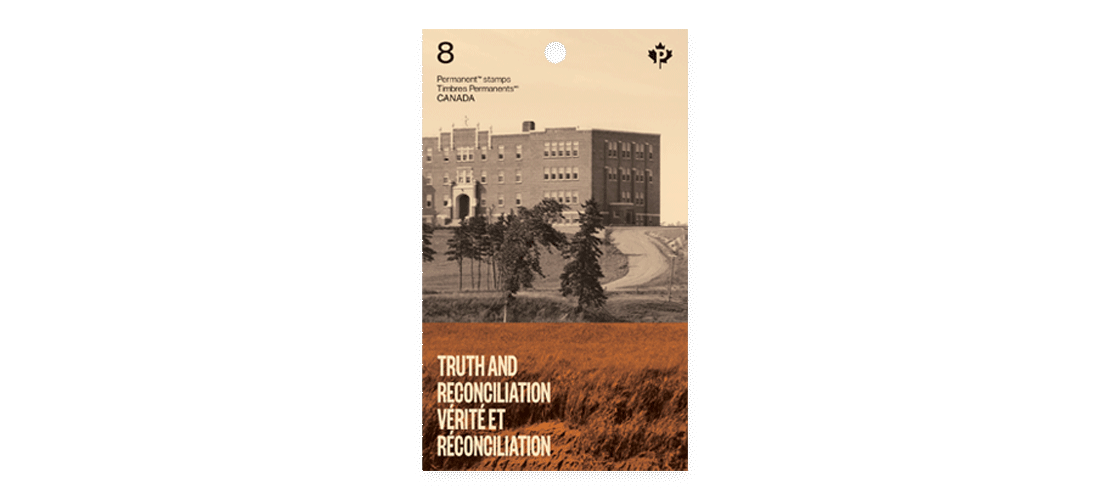
Opened: 1929
Closed: 1967
Denomination: Roman Catholic
Shubenacadie was the only residential school for Indigenous children in the Maritimes. A year after its opening, the system hit a peak of 80 institutions operating at the same time until more schools were opened in the 1950s.
From the beginning, Shubenacadie suffered from poor construction and maintenance as well as overcrowding. Students were subjected to hard labour and faced harsh punishments and neglect along with physical, emotional, and sexual abuse.
Some children ran away from the school in an effort to return home. Others died at the school. The school lacked the resources and staff to effectively care for its students, and by 1967 it was closed.
Future consultation
Canada Post will continue to support reconciliation and healing by listening to Indigenous voices and is committed to collaborating and deepening its relationship with the Survivors Circle to help guide its annual Truth and Reconciliation stamp series.
The National Indian Residential School Crisis Line provides 24-hour support to former residential school students and their families. If you require support, please call 1-866-925-4419.
Truth and Reconciliation stamp issue draws attention to the legacy of residential schools
Available now